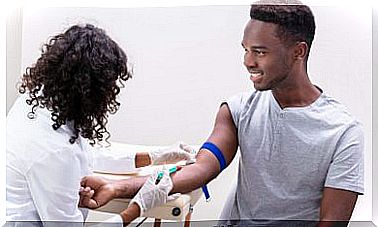How To Communicate Bad News In Health
On many occasions, the way of communicating bad news predicts both the prognosis and the attitude of the patient and family members in health contexts. And it is that, in doing so, there are alterations at an emotional, mental and behavioral level in the receiver. These effects persist for days or months after the news is given to you.
In several studies it has been documented that neither students nor doctors have been instructed in how to communicate a negative result to patients. This leads to doubts, fears or insecurity in health professionals when dealing with these types of vicissitudes.
In fact, in some cases these problems are camouflaged with an avoidance of personal doctor-patient contact so as not to get too involved. What to keep in mind when communicating bad news? There are several strategies. We detail them below.
Conditions to consider before communicating bad news
Generally speaking, there are four conditions to keep in mind when communicating bad news to patients. They correspond to the following:
- Have as much information as possible about the diagnosis, prognosis, severity, etc.
- Bear in mind the idiosyncrasy of each patient (N = 1).
- Lean on the patient’s family.
- Value the genuine doctor-patient relationship and avoid lying or being falsely optimistic.

Once you have all the information possible and the conditions necessary to communicate bad news, you should try to meet the following four objectives:
- Ensure that the information provided is as clear and concise as possible.
- Identify if there are wishes to persuade the patient to adopt recommendations.
- Minimize the stress of the patient to seek their satisfaction.
- Minimize the discomfort of health personnel.
6 Steps to Communicating Bad Health News
Buckman and Baile (2000) devised the 6-step SPIKES protocol to communicate bad health news and minimize the emotional impact of it, as far as possible. We will detail it in the following space.
1. Prepare the interview
Thoroughly examine the patient’s medical history to have the greatest certainty in the diagnosis. It can even be taken to the interview with the patient. The meeting in which the patient and his family are to receive the news must be carefully prepared. For this, it is necessary to assess the emotional state of the affected person.
2. Determine what the patient knows
Assess the patient’s point of view, ask before asserting any option. Remember that to assume is to ignore. Find out the personality, socioeconomic and cultural context of the patient to adapt to it.
3. Recognize how much the patient wants to know
It is necessary to take into account the patient’s concern and whether or not he has a need to know more about his illness. It can be found, from patients who do not want to know anything, to patients who want to know every last detail of their disease. In both cases, you have to respect it and try to provide the best care.

4. Communicate the information to the patient
Information should be shared with the patient in a kind of therapeutic dialogue. Medical jargon will be avoided and the lexicon will be taken care of to adapt it to the cultural level of the patient. Non-verbal language should also be taken care of, so that it is slow and the dialogue is accompanied with consistent gestures.
5. Respond to patient reactions
It is necessary that, whatever happens, the doctor shows empathy and understands the patient’s emotions, as these can be very variable. However, in cases where the response is very maladaptive, the doctor should request the support of the appropriate personnel.
6. Design a treatment plan
Follow-up will be scheduled, making it clear to the patient that they will never be alone and that they will have the necessary support. Here, ultimately, it is convenient to make a brief summary of what was said in the interview and clarify any doubts that may have arisen.
The attitude of the doctor is important to communicate bad news in health
The response of the doctor and the rest of the health personnel is crucial in the face of the patient’s reactions, especially when communicating bad news. For this reason, physicians should be instructed in these techniques, as well as in resources for interviews.








